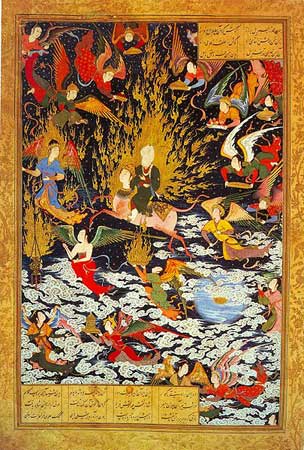Caricatures and Representations

Last month, the scholar Jytte Klausen published a book on the controversy surrounding the Jyllands-Posten caricatures of the Prophet Muhammad. But, despite its title, The Cartoons That Shook The World didn’t include any images. Yale University Press, Klausen’s publisher, decided to censor the cartoons out of fear that they could lead to trouble here in the United States. Of course, that only led to more controversy. (For the record, I happen to think Yale should have included the images, because they are crucial for any full understanding of the situation. To exclude them makes a thorough discussion impossible.)
In the New Republic, Oleg Grabar examines the larger question of representations of the Prophet Muhammad. He takes the reader on a little history tour through Islamic art. For instance, he discusses various representations of the Prophet Muhammad in printed form, particularly in depictions of Isra’ and Mi’raj (the mythical Night Journey, as in the image above). Although I am not entirely comfortable with claims he makes about “the Muslim world,” it is hard to take any issue with his conclusion:
To the extent that the argument against the so-called cartoons has centered on the legal propriety or impropriety of representing the Prophet Muhammad, it has been a pointless argument. Of course it is possible to question the Danish caricatures on grounds of taste, or social or political intent; but the lack of taste is not a legal category, and mischievous or even evil intent is difficult to discern in the absence of clearly stated moral and philosophical principles. The only certain lesson to draw from the sad story of the Danish cartoons is the almost universal prevalence of ignorance and incompetence–and that everyone, from writers and pundits to the leaders of mobs, should learn more before making a judgment or starting a riot.
You can read the essay in full here.